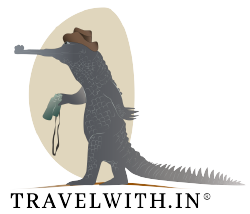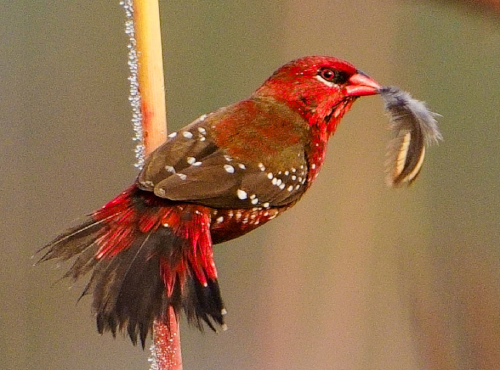Dholpur – the mere mention of this city in the eastern end of Rajasthan used to send shivers down a spine till about the turn of the millennium. Yes, not too long ago, Dholpur which came on the way from Agra to Gwalior was the hotbed of banditry. If you happened to travel after dark or you had the misfortune of a flat tyre, you most likely came back with a story – one that involved you getting robbed of your valuables. The dacoits were notorious in this region – robberies, kidnappings and murders were common.
Many politicians and special forces (even from the time of the Mughals) tried to curb the law and order in the region but without success. The region’s criss crossing deep ravines infested with thorny bushes, wild animals and harsh weather conditions made it very difficult to catch these bandits who spent majority of their lives hiding in them. It was around the late 1990s when the last organized gang of bandits surrendered to the cops only after majority of the gang members were shot and killed.
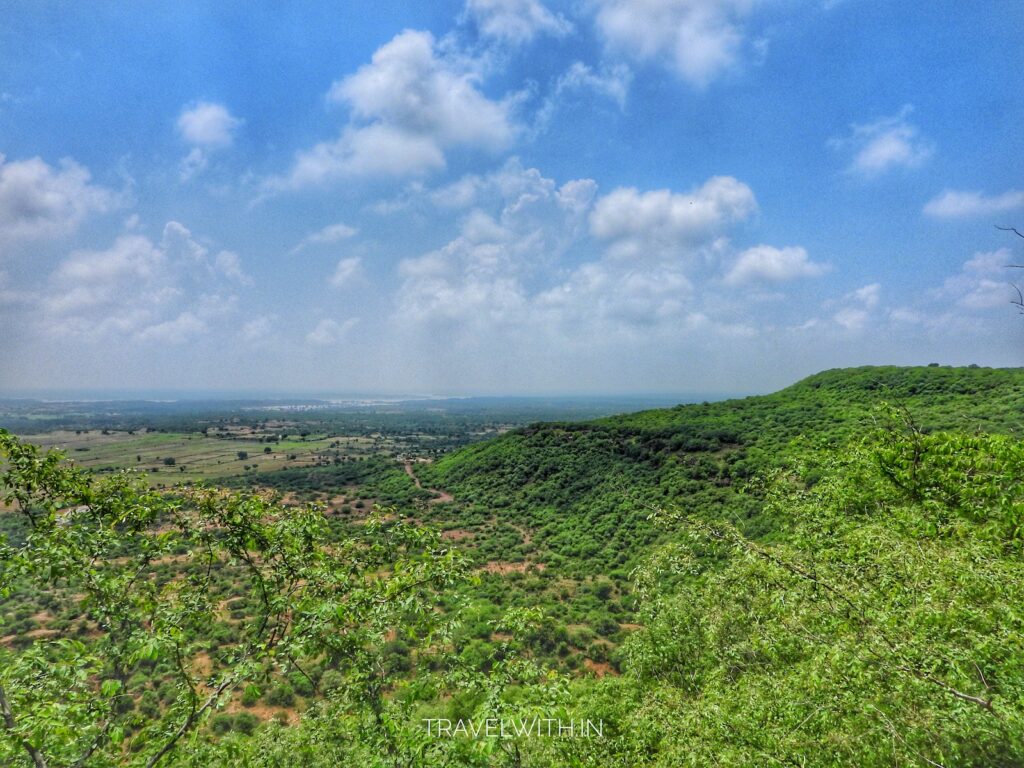
Kesarbagh Wildlife Sanctuary
Due to this age old bad reputation, Dholpur has rarely been featured in a Lonely Planet’s travel guide. However, the city and it’s surroundings are extremely rich in built and natural heritage. It is an hour drive from Agra and easily accessible from Delhi. I take my guests for the Chambal River Safari near Dholpur but there is plenty more to see and do if you have the time and the interest in un-crowded attractions. Dholpur is said to exist from the time of Buddha. Over time it was ruled by many empires – Mauryan, Rajputs, Afghans, Mughal, British and eventually the Jats. It is famous for the red sandstone which was used to make both the Red Forts in Agra and Delhi.
Over the past few years I have made multiple excursions in the Dholpur region. There is plenty to see and most of it is devoid of mass tourism (other than on major public holidays). There is plenty more that I have yet to discover and I will continue to update this post.
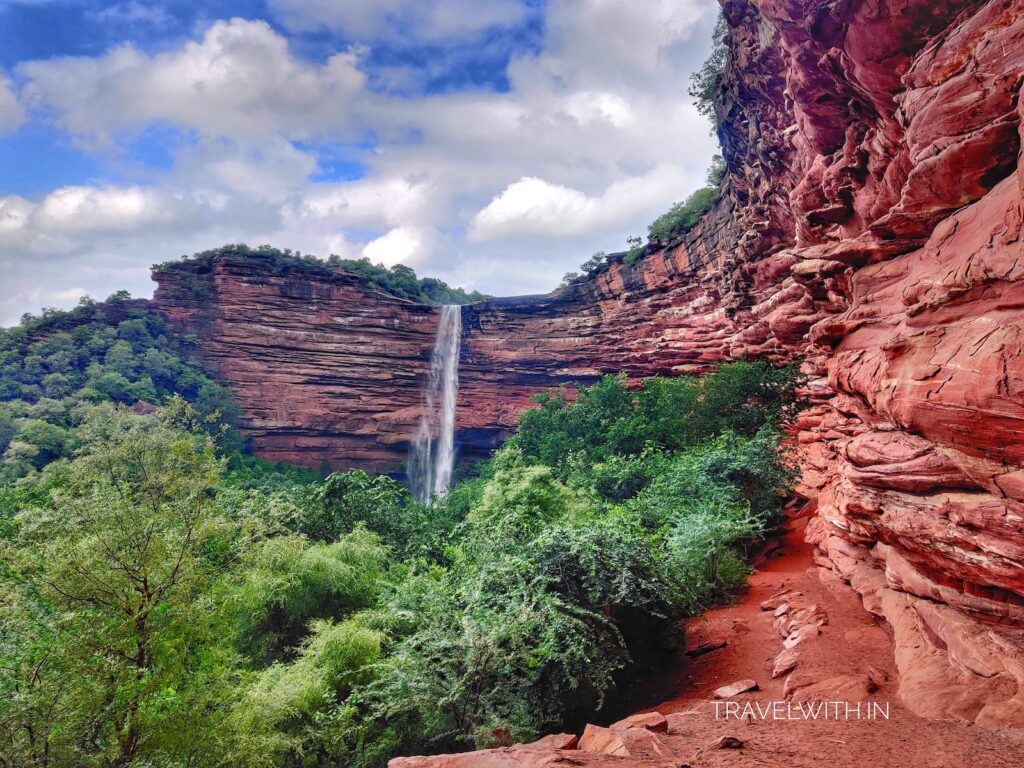
Way to the Damoh waterfall
Male Gharial & Indian Skimmers
1. Chambal River Safari – I have written much about this out of the world wildlife experience. Please click here for more information on this attraction. Best time to visit is winter.
2. Shergarh Fort – Just before you cross the bridge over the Chambal lie the ruins of Shergarh Fort. It’s last remaining turrets and high stone walls still stand prominently with what would have once been a spectacular viewpoint to watch life on the Chambal river. It’s massive stone entrance is a sight to behold. Built by the Rajputs, it was captured and reconstructed by Sher Shah Suri (Afghans) in the 16th century as a defence fortress to check advancing armies from the kingdom of Mewar. Later on it was taken over by the Mughal empire and then abandoned for reasons unknown. It is surrounded by deep ravines on all sides. Some claim that back in the day the Chambal river used to flow right below the Fort’s walls. Today, the river flows a few meters away from the Fort.
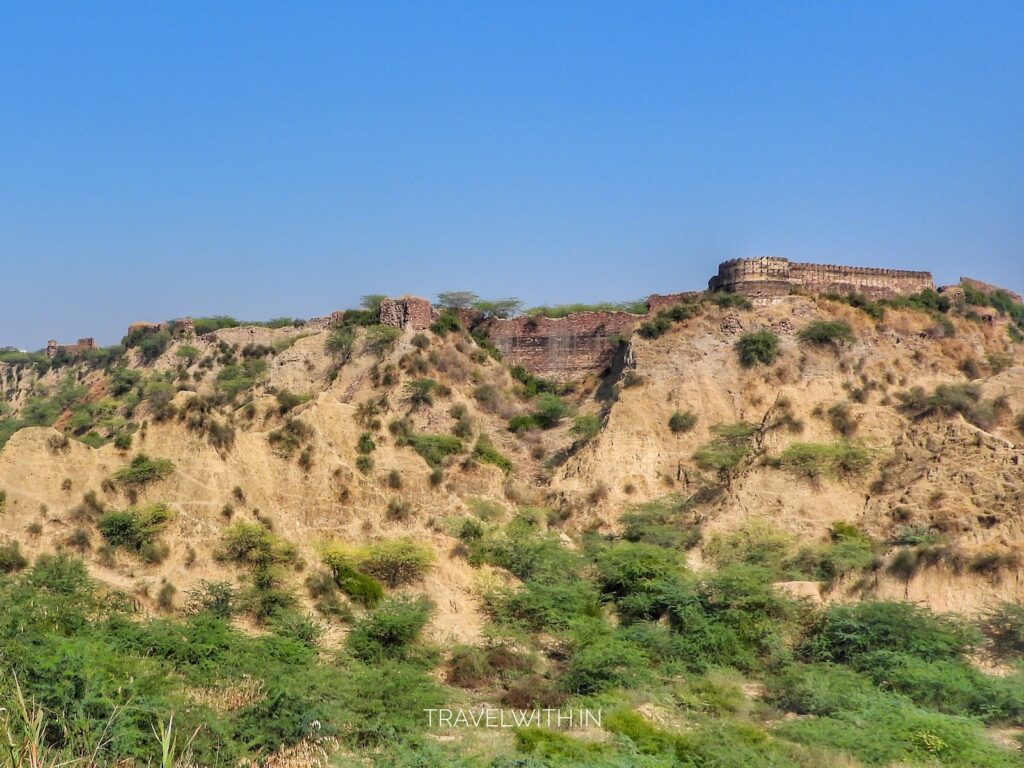
Shergarh Fort
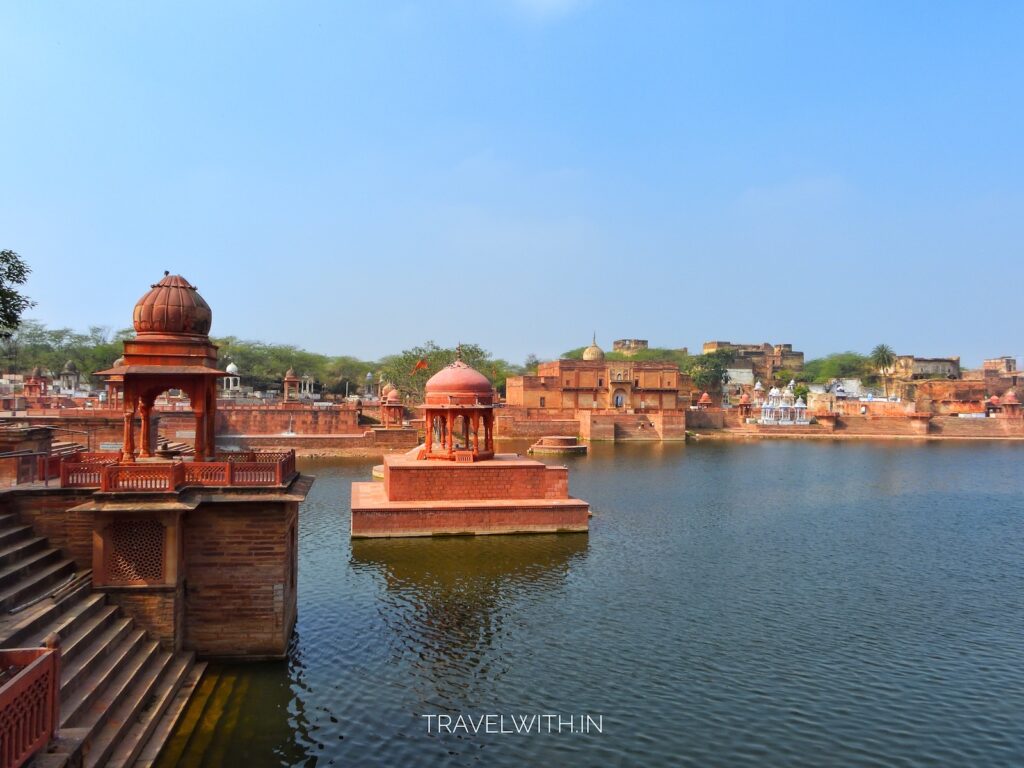
Machkund
3. Machkund – A 10 minute drive from Dholpur is a cleaner and not so well known version of the world famous Pushkar ghats. Machkund is sacred to the Hindus just as Pushkar is and has a lake with steps for worshippers to bath in. The lake is flanked on all sides by ancient havelis and temples built by nobility and the wealthy. Other than on religious holidays you will not see many people here. The stone work in the havelis and temples is incredible and if any of the temples or havelis are open do take the opportunity to peek inside.
4. Van Vihar and Kesarbagh Palace – A 15 minute drive from Dholpur city are two of four wildlife sanctuaries in Dholpur. One is named after Kesarbagh Palace which was home to the Jat royal family and rulers of Dholpur before they moved to their current location in the heart of a city. Today the palatial buildings of Kesarbagh and it’s grounds are home to the Rashtriya Military School (RMS). The forests inside the school campus are home to some of the oldest Dhok (native trees that grow easily in rocky barren areas) trees I’ve seen in my life. The school’s employees have seen sloth bears, leopards and several species of birds in their campus. Please note that RMS is not open for public and visitors need permission from it’s Principal before entering the campus grounds.
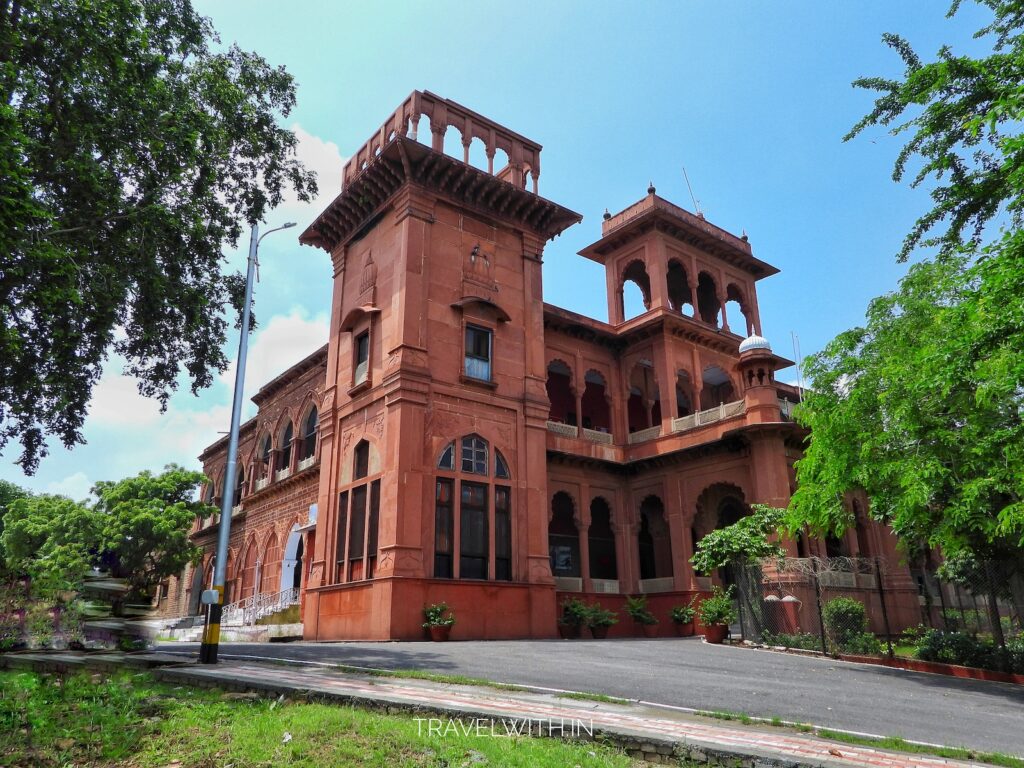
Kesarbagh Palace and Rashtriya Military School
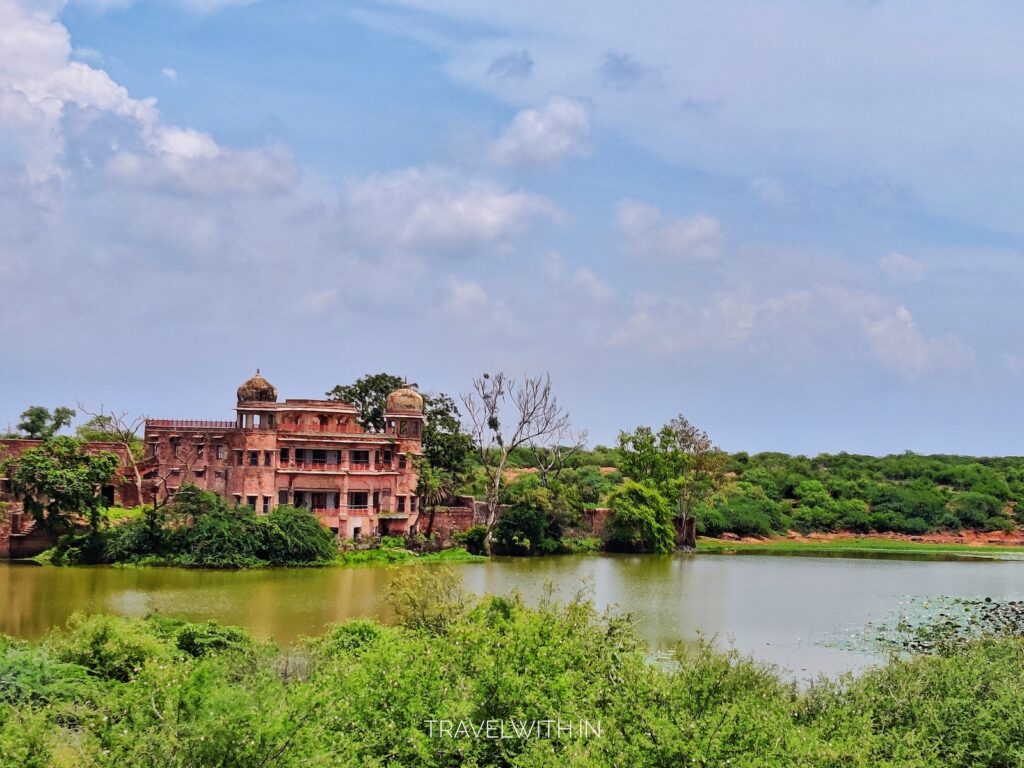
Van Vihar Hunting Lodge
The other sanctuary is Van Vihar named after a hunting lodge built in local stone by the royal family of Dholpur. I remember visiting this beautiful lodge in 1991 with my grandfather. The lodge faces a lake which is frequented by wild animals in the summer months. Today, the Lodge lies empty, stripped of it’s royal antique furniture and fittings. Till recently monkeys and pigeons had desecrated the entire mansion but off late the Forest Department has barred all entrances with wire mesh. The Lodge looks cleaner and does not smell of animal faeces anymore. I truly hope it is restored to it’s former glory – it can be a great asset to boost local tourism.
The other two sanctuaries in Dholpur are the National Chambal Wildlife Sanctuary and Ramsagar Wildlife Sanctuary.
5. Talab-e-Shahi – On the way to Damoh and about a 30 minute drive from Dholpur is the 17th century Talab-e-Shahi (talab means lake). On one side of the man made lake is a red sandstone monument who’s function was that of a hunting lodge. The lake is named after Shah Jahan. He frequently visited Dholpur for hunting and to please him the local rulers built this palatial lodge so he didn’t sweat it out in make shift camps. The lake and several other water bodies in the area attract many migratory birds in the winter season such as Pelicans, Flamingos, Waders, Osprey, etc. Unfortunately, the hunting lodge is not well maintained. Part of it is a police station, the other part is locked up and in ruins. I believe this hunting lodge too has great potential to be restored and made in to a heritage hotel, this regions desperately needs a few good hotels.
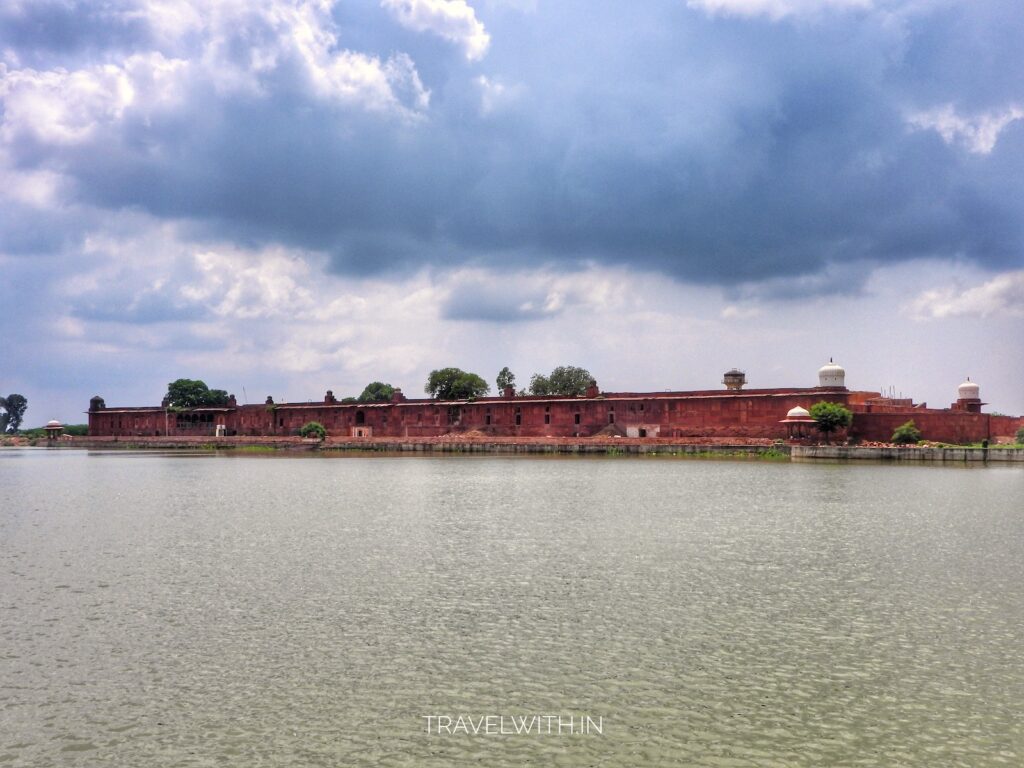
Talab-e-Shahi
Damoh Waterfall
6. Damoh Waterfall – 30 minutes from Talab-e-Shahi and about an hour from Dholpur is Sarmathura. A short drive from the town is Damoh – a huge crescent shaped gorge surrounded by dense forests once home to Asiatic Lions besides tigers and host of other wild animals. Today, the Asiatic lion’s range is restricted to only Gir National Park in Gujarat which is 1,200 KM from Damoh. Yes, the British and Indian nobility shot them all down. Damoh is fed by seasonal rain water during the monsoon and if you happen to be there during it’s peak, the sight is unbelievable. It is recommended to drive in a 4×4 to reach Damoh and as there is nothing en-route to eat, please carry enough food, water and leave the area before dark.
The gorge is also home to vultures so keep a look out for them. You can walk down the path to the base of the waterfall. There is a temple at the base of the waterfall and the local priest claims to have seen tigers, leopards and bears. These animals visit the shallow pools of Damoh to quench their thirst when temperatures soar 40+ degree celsius.
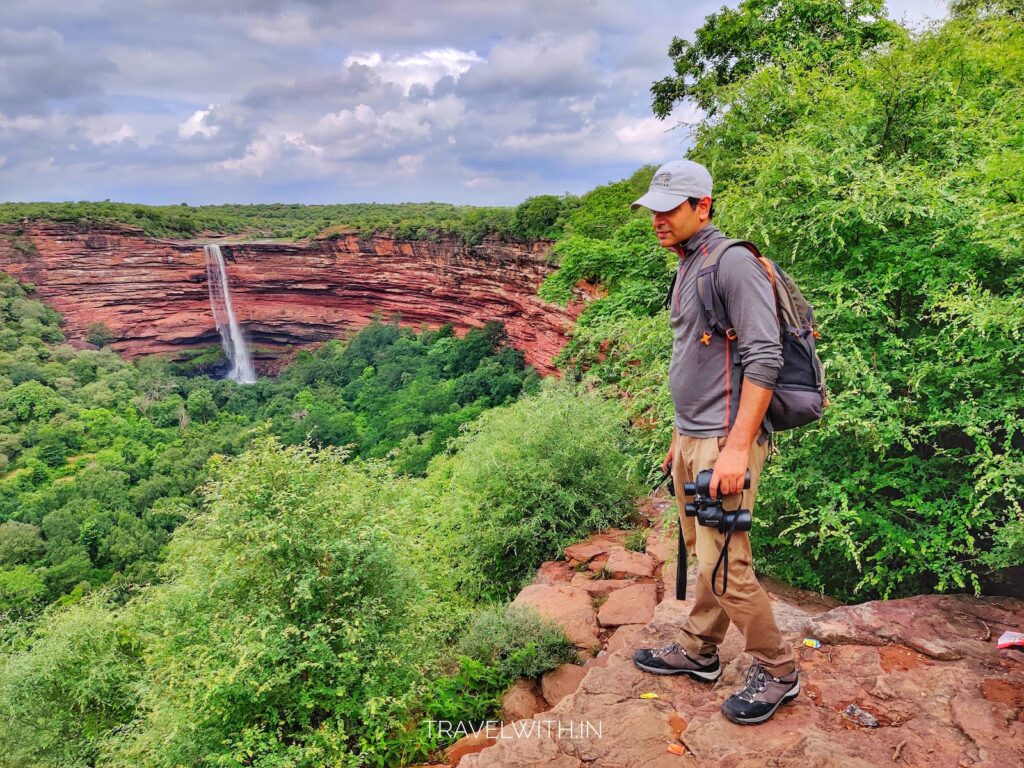
Damoh Waterfall in Monsoon
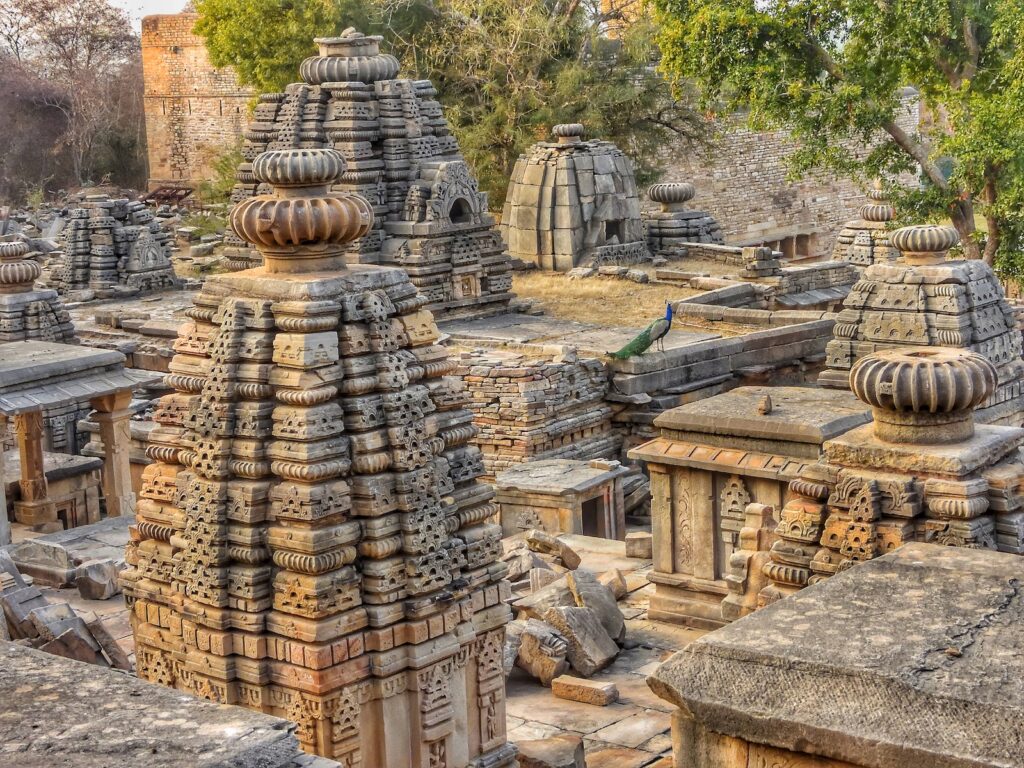
Bateshwar Temples – Morena
7. Bateshwar temples in Morena – An hour drive from Dholpur and on the way to Gwalior are a cluster of 6-10th century Hindu temples and ruins. These temples like many other attractions in this region were not open for visitors as they were in bandit territory. Only recently have people started visiting these stunning temples. If you’re interested in ancient architecture, you will thoroughly enjoy visiting these temples. More about them here.
How to get there?
The most convenient option is to self-drive or to hire a taxi from Agra as many of the above locations are far away from the city. Finding a taxi in Dholpur will be a challenge. Public transportation is not recommended. Sometimes the road conditions to these places may not be the best and tourist facilities such as functioning toilets not available. It is therefore recommended that you travel to these places with an open and flexible mindset. People with mobility issues will face many challenges accessing these attractions. Dress conservatively.
Where to stay?
Agra is an hour drive from Dholpur and offers hotels and homestays for all kinds of travlers.
